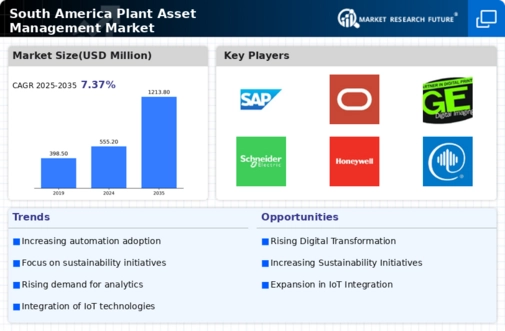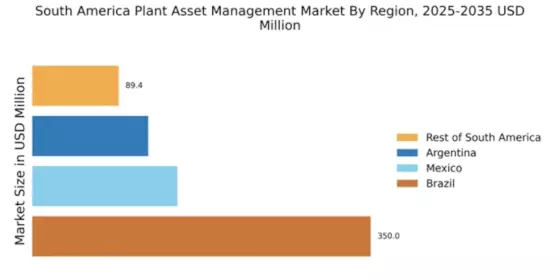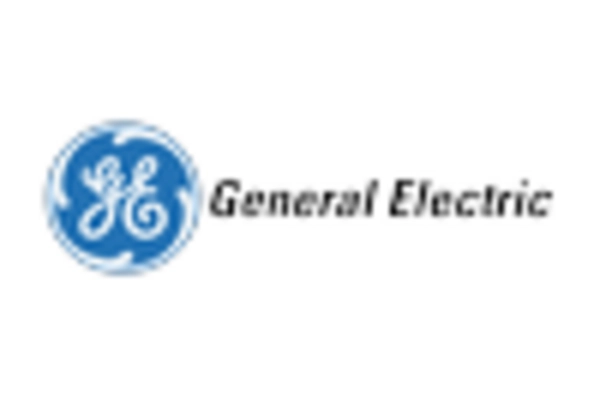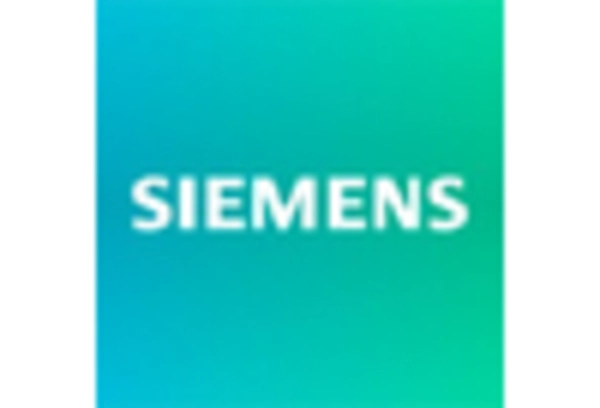Focus on Operational Efficiency
the plant asset-management market in South America has witnessed a heightened focus on operational efficiency. Companies are striving to reduce operational costs while maximizing productivity. This drive is leading to the adoption of sophisticated asset management tools that facilitate better tracking and maintenance of equipment. In 2025, it is anticipated that organizations implementing these tools could achieve cost savings of up to 25%. The emphasis on efficiency is also prompting businesses to invest in training programs that enhance workforce skills in asset management practices. This dual approach of technology adoption and workforce development is likely to reshape the competitive landscape of the plant asset-management market.
Investment in Infrastructure Development
The ongoing investment in infrastructure development across South America is a key driver for the plant asset-management market. This investment is crucial for enhancing transportation, energy, and industrial facilities. Governments and private sectors are allocating substantial budgets to enhance transportation, energy, and industrial facilities. This investment is expected to reach approximately $200 billion by 2026, creating a robust demand for effective asset management solutions. As new plants and facilities are constructed, the need for efficient management of these assets becomes paramount. Companies are increasingly seeking advanced asset management systems to ensure that their infrastructure operates at peak efficiency, thereby driving growth in the plant asset-management market. This trend suggests a long-term commitment to improving the region's industrial capabilities.
Regulatory Compliance and Safety Standards
In South America, the plant asset-management market is significantly influenced by stringent regulatory compliance and safety standards. Governments are increasingly enforcing regulations that require companies to maintain high safety and environmental standards. This has led to a growing demand for asset management solutions that ensure compliance with these regulations. For example, industries such as oil and gas, mining, and manufacturing are investing heavily in asset management systems to avoid penalties and enhance safety protocols. The market for compliance-related asset management solutions is projected to grow by 15% annually. This growth reflects the critical need for organizations to adhere to legal requirements while optimizing their operations.
Technological Advancements in Asset Management
The plant asset-management market in South America is experiencing a surge due to rapid technological advancements. Innovations in software and hardware are enhancing the efficiency of asset management processes. For instance, the integration of advanced analytics and machine learning is enabling companies to predict equipment failures, thereby reducing downtime. In 2025, it is estimated that the adoption of these technologies could lead to a 20% increase in operational efficiency across various sectors. Furthermore, the rise of cloud-based solutions is facilitating real-time data access, which is crucial for effective decision-making in the plant asset-management market. This trend indicates a shift towards more data-driven strategies, allowing organizations to optimize their asset utilization and maintenance schedules.
Sustainability Initiatives and Green Technologies
Sustainability initiatives are becoming increasingly vital in the plant asset-management market in South America. Companies are recognizing the importance of adopting green technologies and practices to minimize their environmental impact. This shift is not only driven by regulatory pressures but also by consumer demand for sustainable practices. As a result, organizations are investing in asset management solutions that support sustainability goals, such as energy-efficient equipment and waste reduction strategies. The market for sustainable asset management solutions is projected to grow by 18% over the next five years, indicating a strong alignment between environmental responsibility and business strategy in the region.


















Leave a Comment